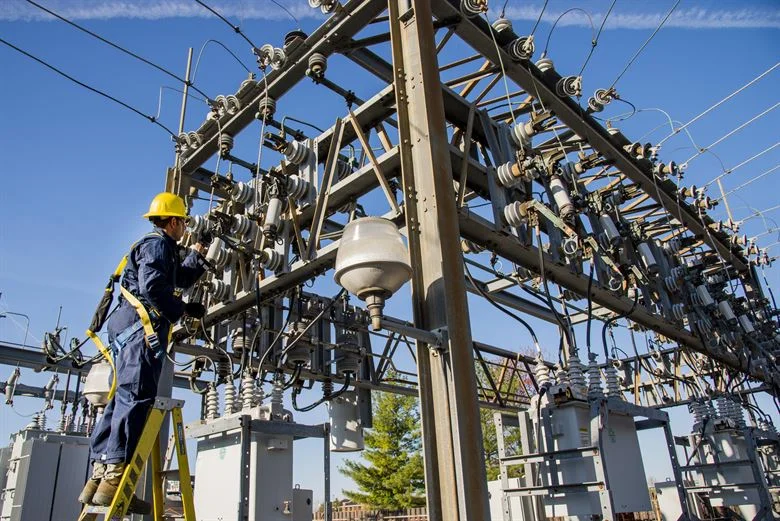With the ongoing change in the global economy, it becomes critical that electrical engineers ask how many jobs are available in electric utilities Central. Electric utilities like power plants and grid systems are dynamic and constantly changing.
Electricity has a boundless range of applications, so this industry breeds a wide variety of electrical occupations – from electrical technicians to electronic engineers. Read on to learn about some of the most common jobs in the electrical industry.
This is why it becomes essential to have updated knowledge on the technical aspects of your career. Electrical engineers need to be prepared with advanced knowledge on both the theoretical and practical sides of their job before applying for any specific position in this field.
The Energy Information Administration reports that the number of workers in electric utilities is expected to increase between 2010 and 2020 by about 4 per cent due to population growth and demand for electricity from new customers.
What is Electric Utility Central

An electric utility is a company in the electric power industry that generates and distributes electricity for sale generally in a regulated market. The electrical utility industry is a significant provider of energy in most countries.
Electric utilities are responsible for the transmission and distribution of electricity to end-users, such as businesses, households and industrial consumers. This is usually done through sub-transmission lines, transmission lines and substations.
The distribution of electricity through a grid is called “electricity transmission.” Electrical utilities may be procured from local companies or larger companies that have been granted rights to sell electricity by their respective governments.
The electric utility department is made up of three main categories which are:
- Power Generation Sector (Generators) – Generators are responsible for providing power to homes, businesses, and industries through a network of power lines. They generate electricity using coal, natural gas, nuclear energy or renewable sources such as wind and solar power.
- Power Distribution (Distributors) – Distributors are responsible for distributing electricity from the power plant to homes and businesses. The distribution lines carry electricity through direct current (D.C.).
- Power Transmitting (Transmitters) – Transmitters operate and maintain the high-voltage transmission lines that carry electricity over long distances at high voltage levels to substations, which are then converted into alternating current (A.C.) for use by consumers.
How Do Electric Utilities work
The electric utilities follow the channel of distribution from power plants where it’s generated to homes and businesses where it is consumed.
The process of delivering electricity starts with power generation. The power plants use different methods to generate electricity, but they all involve converting energy into electrical form.
The three main methods of generating electricity are hydroelectric, which involves moving water through turbines; nuclear power, which uses nuclear fission reactions to create heat; and fossil fuel-based, which burns coal or oil to create steam that spins turbines.
Once the electricity is generated, it must be carried over long distances before reaching homes and businesses. This is done by sending a high-voltage current through metal wires called transmission lines. Transmission lines are held up by metal towers called pylons that span great distances—some have been built as long as 50 miles!
At this point in its journey, the electricity becomes “distribution” or “power.” This means that it’s been transformed into lower voltages so it can safely carry over shorter distances through underground cables called distribution lines. These cables connect directly with our homes and businesses so we can use them safely without fear of electrocution or fire damage!
Is electric utility central a good career path?

You’ve heard it before: electricity is the future.
And with good reason—electricity is everywhere, and we can’t imagine life without it. It powers our homes, schools, hospitals, and businesses; it keeps our food cold, our water clean, and our smartphones charged. It’s a part of everything we do—and it’s only going to become more critical as time goes on.
There are many fields in it, such as: generating, transmission and distribution.
In generating, you can work with different types of energy like solar panels or wind turbines and generate electricity for the whole community.
In transmission and distribution, you build and maintain the power grid so that all your customers get their electricity from you.
This field has been overgrowing in the last few years due to increased demand for electricity and technological advancements which allow us to generate and store more energy than ever!
For these reasons, an electric utility central career path is a great way to invest in your future. Electricity is one of the most widespread consumable energy sources on Earth, so there are plenty of opportunities for job growth in this field—and plenty of room for you to make a difference at whatever level you’re comfortable with starting.
How many jobs are available in electric utilities central
There are plenty of jobs available in the electric utility industry.
According to the Bureau of Labor Statistics, there were 627,100 total electric power generation and distribution jobs in 2017. In the same year, there were 522,400 jobs in electric power transmission, control, and distribution occupations. This means more than 100,000 open positions were in each category during that period.
In addition to these numbers, many people who work in the electric utility industry are also employed by other companies. For example, many people who work for U.S. Steel or General Electric also work as linemen or engineers at their local utility company.
According to the Bureau of Labour Statistics, the average salary for an electrician is $65,000. The median income for a lineman is approximately $52,600.
List of Job Opportunites In Electric Utilities Central
1. Electrician
An electrician is a skilled worker who installs, repairs, and maintains electrical wiring, equipment, and fixtures. They are responsible for maintaining the safety of their fellow employees and the public by following all company policies and industry standards. Electricians may specialize in one or more areas of the trade, such as residential or commercial installations, industrial wiring projects, or high-voltage power lines.
Education and Training
A good electrician will have a strong knowledge of electrical theory and code requirements. They should also be familiar with different types of materials used in the construction industry, including
- Steel conduit pipe,
- Rigid aluminium conduit (RAC),
- Flexible metallic tubing (FMT),
- Armoured cable,
- Fibre optic cable and more.
In addition to understanding these materials, they should know how they are installed and what tools and equipment are required for installation.
Average Salary
In May 2018, the U.S. Bureau of Labor Statistics reported that over the decade 2016-2026, employment of electricians is expected to grow by 9%. Still, in a job market where it was difficult to find information on what an average electrician earned, I searched several news outlets and found that most made between $32,940 and $94,620.
2. Line Worker:
Line workers are responsible for the maintenance and repair of electric utility lines. They may be involved in installing, maintaining and repairing power lines, substations, transformers and other equipment. Line workers must know electrical theory and safety practices. They should also have experience working with heavy equipment such as chain saws or cranes.
Education & Training
Most line worker positions require a high school diploma or equivalent. Many employers prefer candidates with post-secondary education in an electrical field, such as an associate degree in electrical technology; some employers may require applicants to complete certification programs through trade associations such as the National Joint Apprenticeship Training Committee (NJATC).
Average Salary
The field is expected to see job growth of 8% over the next ten years; as of May 2018, this industry reported an average salary between $38,200 and just over $100k.
3. Power Plant Operator
The Power Plant Operator is responsible for a power plant’s safe and efficient operation. They monitor and control various aspects of the plant, including temperature and pressure. They also ensure that the plant’s equipment is properly maintained, inspected, and repaired.
The operator typically works full-time during regular business hours but may be required to work overtime in emergencies. They must be able to lift heavy objects and climb ladders and stairs frequently. The job requires good communication skills since the operator must frequently communicate with others via phone or computer.
Education & Training
Education requirements for Power Plant operators include a high school diploma or equivalent and relevant training from a vocational school or an apprenticeship program.
Some employers prefer candidates who have completed an associate’s degree program in electrical engineering technology or a similar field, which can take four years or more.
However, many employers will accept applicants who have only completed high school education if they have relevant work experience (typically at least six months).
Average Salary
According to the BLS, employment for power plant operators was expected to experience little or no job growth over the 2016-2026 decade. The median annual wage of these professionals stood at $79,610 in May 2018.
4. Electrical Technician
The Electrical Technician is responsible for installing, maintaining, and repairing electrical equipment in support of the mission of Electric Utilities Central. The Electrical Technician will be expected to work in a fast-paced environment with strict deadlines and quality control standards.
Education & Training
The Educational Requirements for this position include a high school diploma or equivalent and at least one year of experience in an electrician’s apprentice program or related field. Candidates should know basic electrical principles and practices, including but not limited to wiring circuits, power systems components, and electrical testing equipment.
Electrical Technicians must communicate effectively with other team members and clients while working with minimal supervision. They also need to be able to lift 50 pounds as part of their job duties.
Average Salary
The net growth projected for electrical engineering technician jobs from 2016 to 2026 is 2%. The annual median wage as of May 2018 was $64,330. Most professionals in this position earn between $38,110 and $95,140 per year.
Conclusion
As seen above, there are many opportunities for people pursuing a career in electric utilities central. The industry’s growth is expected to increase by more than 13% over the next three years. If you ever plan on pursuing a career in this industry, you should apply for job opportunities as soon as possible.
